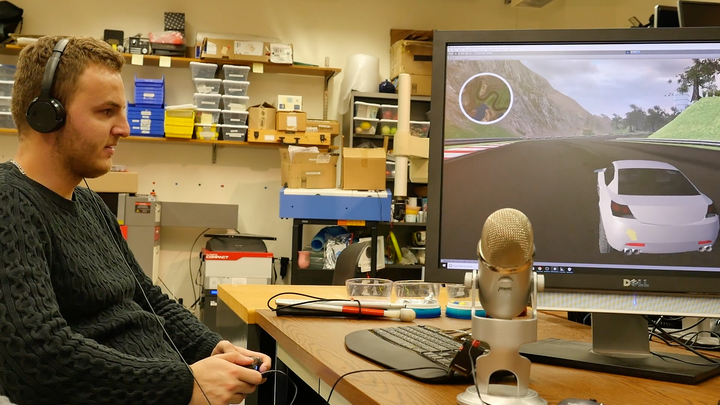
A PhD candidate in computer science at Columbia Engineering has developed a powerful new piece of software that allows the blind and visually impaired to play racing video games.
The technology, known as racing auditory display (or RAD), was designed by PhD candidate Brian Smith to allow those with a visual impairment to play racing video games at the same speed and intensity as those who are sighted.
RAD works by essentially creating an auditory ‘picture’ of the video game and what’s happening within it.
As the player moves around the track they are constantly fed different auditory signals that can then give them information about their position on the track, speed and how close they are to cutting or missing the corner completely.
The goal, as Smith explains, was to make sure that at no point was the system cutting any corners on the experience of playing a racing game at full speed.
“The RAD is the first system to make it possible for people who are blind to play a ‘real’ 3D racing game—with full 3D graphics, realistic vehicle physics, complex racetracks, and a standard PlayStation 4 controller,” says Smith. “It’s not a dumbed-down version of a racing game tailored specifically to people who are blind.”
Looking at the current market for video games Smith found that for the visually impaired games were either designed to be overcomplicated in how they operated or they contained assistive features so basic that they turned playing the game into an experience that consisted of simply following orders.
Instead, Smith set out to create a program that could be plugged into any racing game and would simply run alongside it, giving players just enough information to allow them to ‘feel’ the track but to still provide them with a significant challenge.
“The RAD’s sound slider and turn indicator system work together to help players know the car’s current speed; align the car with the track’s heading; learn the track’s layout; profile the direction, sharpness, timing, and length of upcoming turns; cut corners; choose an early or late apex; position the car for optimal turning paths; and know when to brake to complete a turn,” explains Smith.

To prove that his system could work better than competing technologies, Smith actually built his own racing game using one of the world’s most popular game design tools Unity.
Once he had built the game he then carried out two studies with a total of 15 participants. The feedback was extremely positive with one gamer even saying that the system had given him so much information about his surroundings that he almost felt like he could see the track,
While his current system is limited to racing games, Smith doesn’t want to stop there.
“My hope,” he adds, “is that game designers will soon be able to build game systems from a suite of tools that are similarly intuitive and functional to the RAD, and make their video games equally accessible to people who are blind. We think the RAD marks the beginning of a whole new suite of such tools.”
